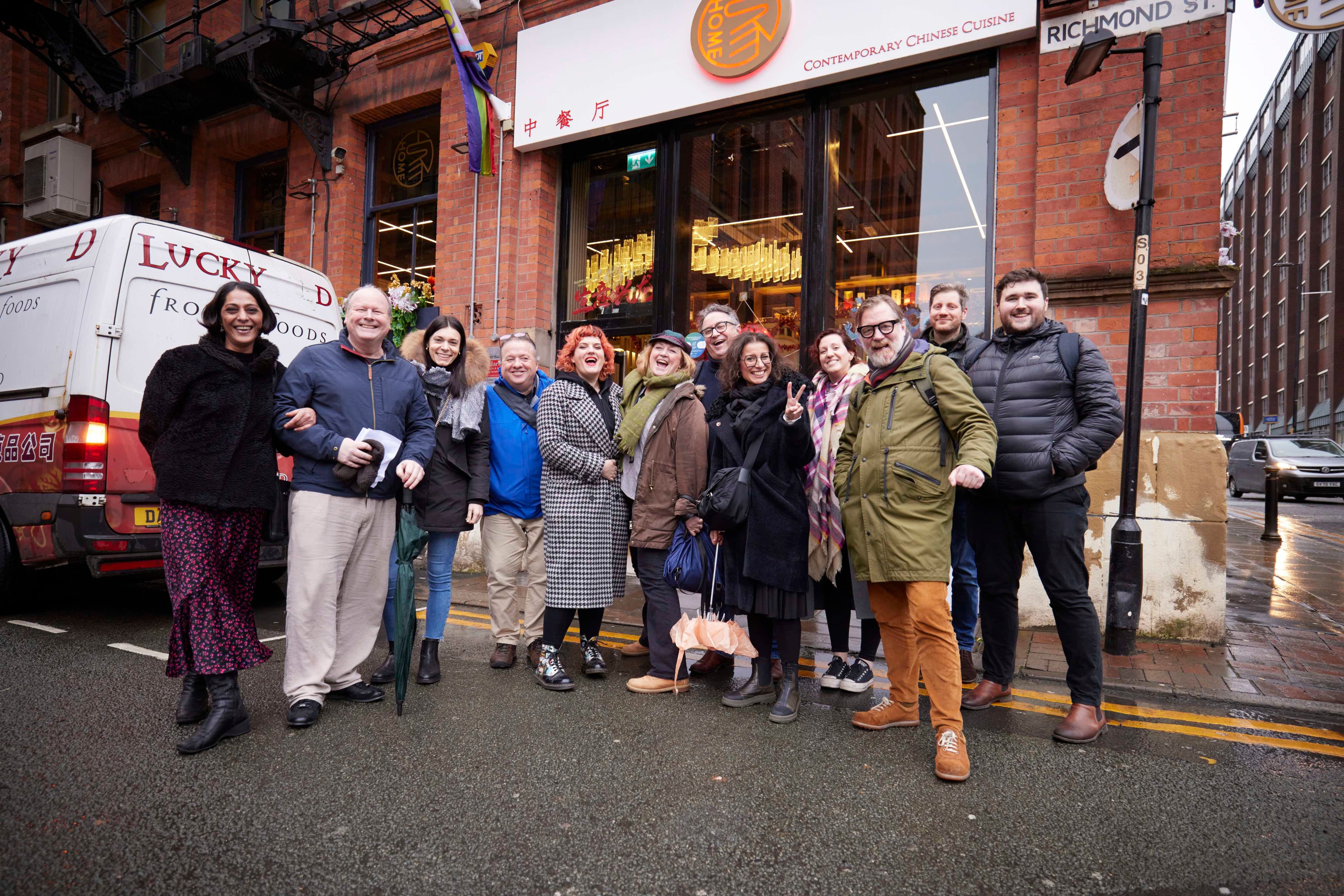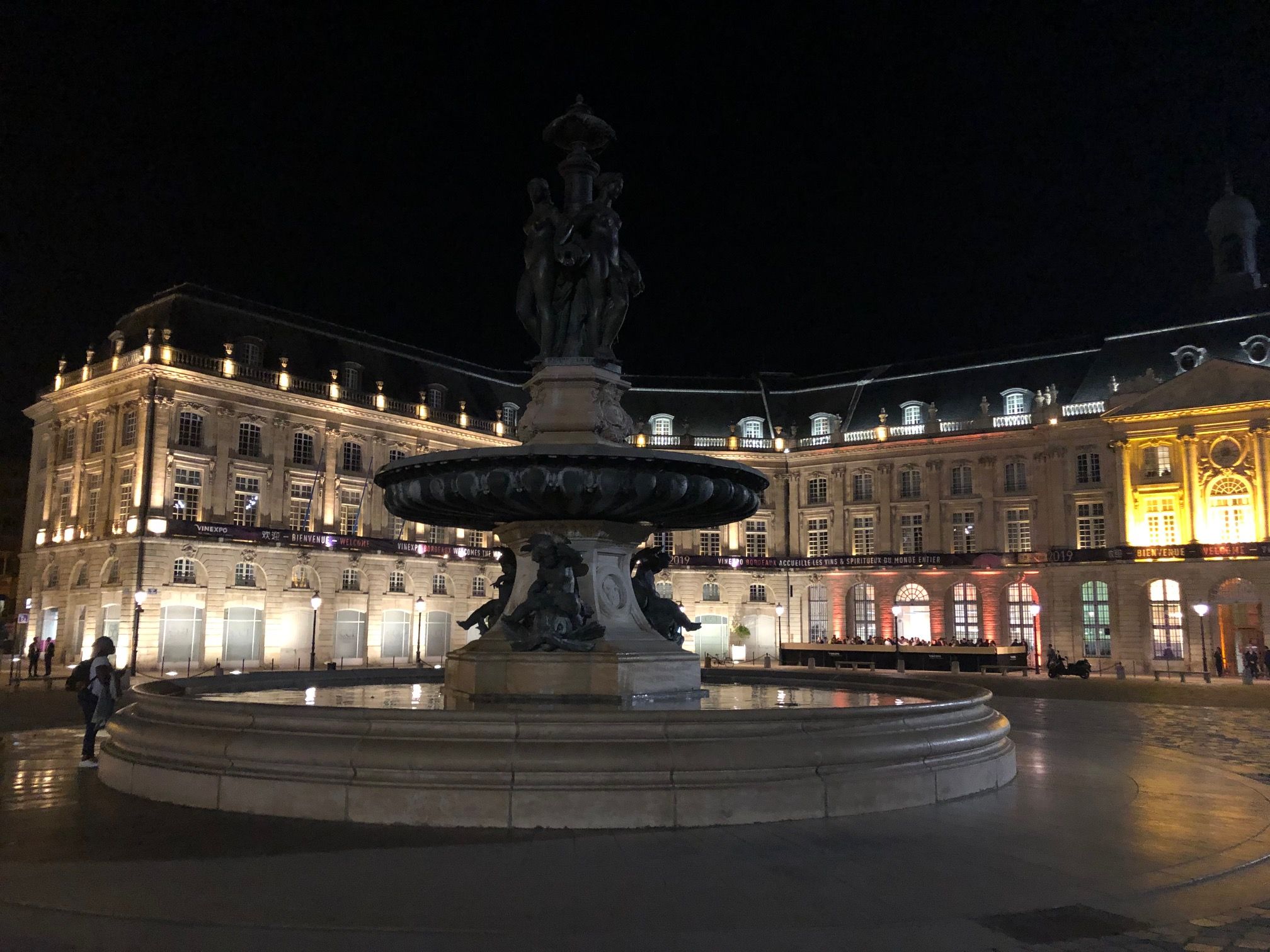Garnett gets to grips with New Zealand wine’s post-Covid market position; hears from key movers and shakers about the newly re-defined brand values; and picks her favourite wines from the New Zealand Wine’s trade tasting.
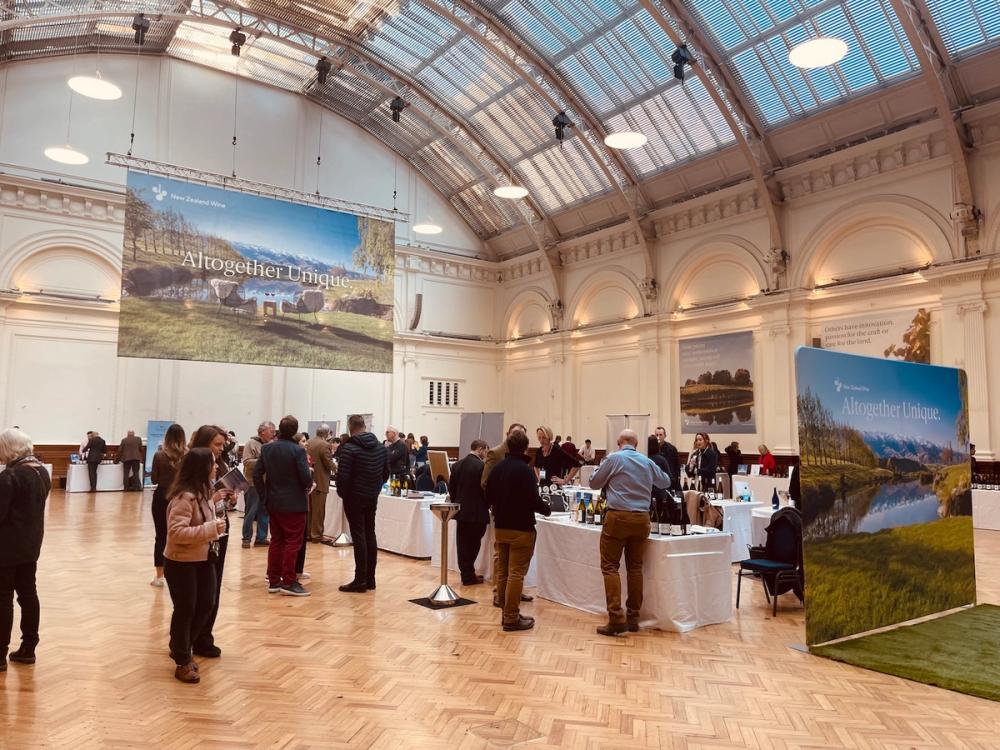
New Zealand Wine’s annual trade tasting, London, February 7, 2023
Whilst working in a pub in Fulham I witnessed a New Zealander get hideously maimed by the local Chelsea ‘shed’ (Chelsea FC). His face was battered and swollen having been smashed against a bar prop right before my eyes. When the assault was finally over he stood up and offered the brute responsible his hand, saying, ‘You won mate, fair and square’. I think there is a smidgeon of this indelible sense of decency in every glass of New Zealand wine.
Where New Zealand wine is at post-Covid
New Zealand has spent the Covid years painstakingly assessing its market position. The UK is the no. 2 by volume for New Zealand wines and they really care about nurturing us. The 2021 vintage was down 20% on 2020s creating a shortfall in supply. Near 1000 ha of vines are being planted yearly so to ensure this does not happen again. They expect strong demand to continue. The much-touted New Zealand free trade agreement, signed in February 2022 but not yet in force, should assist further and is due to kick in this year according to New Zealand Wine chief executive officer Philip Gregan. We asked him what this will mean for exports,
“In simple terms it’s going to make it easier for New Zealand winemakers to get into this market. The changes in the rules around winemaking practices are much more modern and much more flexible, we see this as a real step forward.”
“We believe sustainability; care of the land, air and people is an incredibly important pillar that both the market expects and our producers need to prioritise going forward.”
“The price points we sell at show that our customers care about these things and the New Zealand wine industry has got to deliver in spades on these issues going forward. We need to meet the expectations of our customers and the trade.”
Inflation is a significant issue for New Zealanders, with production costs increasing as a result. It’s the first time New Zealand has suffered high inflation (7.2%) whilst exporting wine so there is no track record of dealing with it. The last inflation wave took place in 1990 when wine exports were practically nil. New Zealand’s wine export market value was up 6% for the year end in September 2022 despite a drop in sales by volume. They have doubled the value of their wine exports in ten short years.
Market manager Chris Stroud took us through the numbers, Stroud being living proof that a chilled and casual delivery does pair well with a razor-sharp comprehension of the facts.
“Still wine volumes are down everywhere but the price has gone up by 11p across the board. In New Zealand, volumes are down but the price has increased further, it still has the second highest still white wine price in the market.”
Looking at data, New Zealand is responsible for 7.5% of the still white wine category, quite a feat for a country with a population of around 5 million. The key Christmas period in 2022 showed trust in the brand was not stilted by shortage. Packaged wine continued to increase in 2022 whilst unpackaged fell, partly due to supply chains issues. The impulse sector reveals an average spend of £10 a bottle and they are selling seven million bottles annually. People really do trust the New Zealand brand. They are getting to pre-Covid volume supply chain levels and they are holding their position on the shelf. Strong premiumisation is key to this sector.
Re-defining NZ wine’s brand values
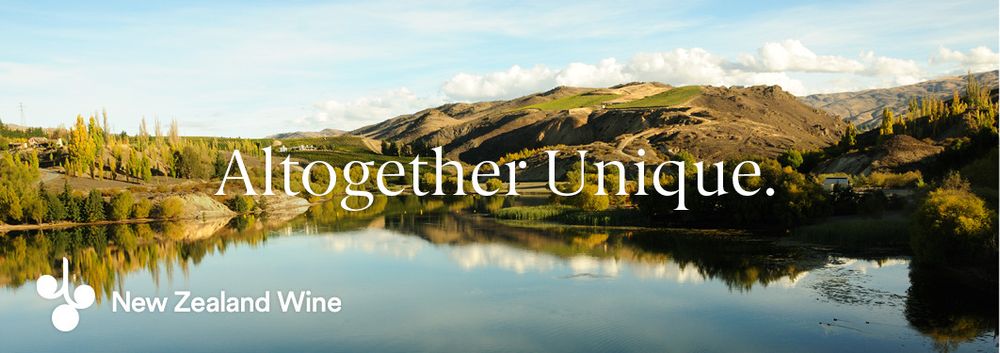
New Zealand Wine’s brand refresh – the first since 2006 – created by agency Many Minds
There has been a lot of navel gazing over the isolation years in the New Zealand wine marketing department. General marketing manager Charlotte Read proffered its distillation at the pre-tasting trade and press briefing. A new promo film conveying the new strap line, ‘New Zealand Wine, altogether unique’.
Read explained that they wanted to, “get back to basics and define who we really are as a wine brand, to explain why we are worth that premium.” The key to their success, she said, is alignment, it’s a group effort. New Zealand Wine Growers is a membership organisation which exists to enhance the reputation of New Zealand wine. It is the only unified national winegrowers industry body in the world. Premium, sustainable and diverse are key messages that are shared by rival countries Argentina and Chile so Read and her team set out to seek out what encapsulates New Zealand in particular.
Members were canvassed, they came up with Purity, Care and Innovation as the core NZ values, the ‘pillars’ as Charlotte describes them, of the industry. She said the ‘Purity’ represents their southerly location; intense sunlight and luminosity, young soils, cool nights, warm days and cool ocean currents; ‘Innovation’ represents their collective sense of adventure. And ‘Care’ encapsulates a long-standing commitment to the land and a sustainability programme dating back to 1995.
A new logo, ‘a shortcut to understanding’, is representative of these three pillars and emotes a teeny bunch of grapes. Modern, bold and sophisticated were the words Charlotte used to describe the rebrand. The video is voiced by, can you guess… Sam Neil. But who doesn’t love Sam? There’s not many actors who could still elicit mainstream appeal after playing The Omen so well and chopping off that lovely lady, Holly Hunter’s finger just for playing the Piano. I guess he just proves my point. All New Zealanders are lovely. I’m not sure what ‘unblemished sunlight’ is though, can anyone help me with that? It’s one of Sam’s key catchphrases. I’m afraid it made me think of holes in the ozone but that’ll just be my tainted mind.
I wondered if the sense of kindness New Zealand conveys is down to Māori influence. The indigenous people of New Zealand are thought to have arrived by open canoe 4000 miles from Tahiti in the 14th century. It was 300 years before the Europeans pitched up. Māori developed rituals to preserve limited resources as the population grew and, according to TUKU, New Zealand’s only Māori wine collective, many of New Zealand’s green values stem from indigenous culture. They also ate their enemies, the ultimate green move in protein recycling.
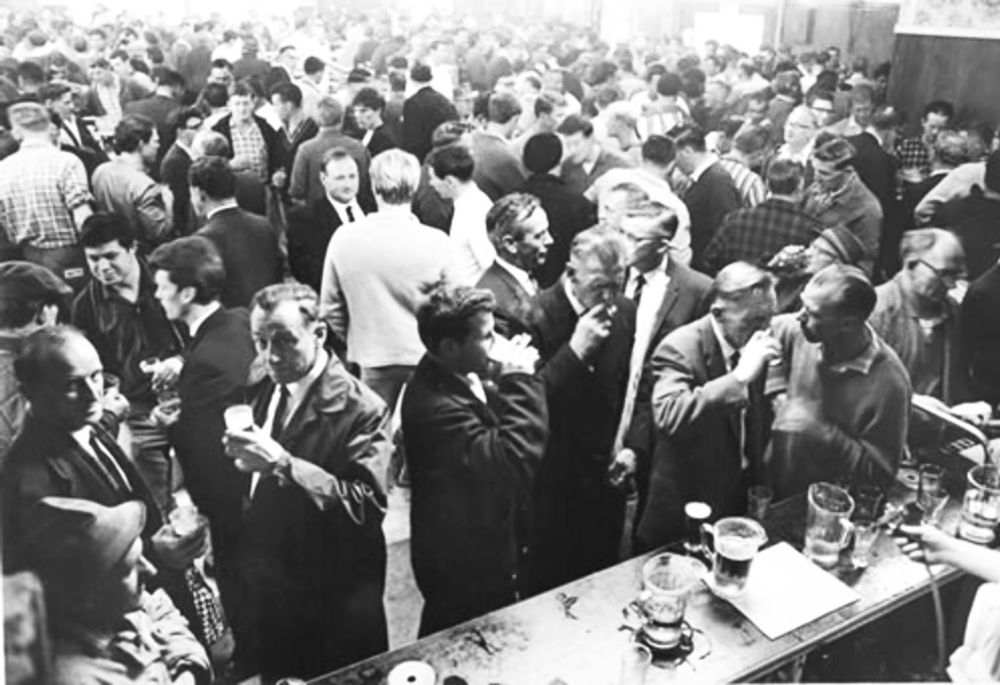
First day of 10 0’clock closing at the Porirua Tavern in 1967, two days after the antiquated 6 o’clock law was abolished
A love of purity might be a positive modern manifestation of a country settled by God-fearing puritanical picts and celts in the 19th century. Most hailed from the UK, a predominantly beer and whisky-producing nation unfamiliar with the cultivation of the vine. Prohibition came within a hair’s breadth of becoming law back in 1910 when 12 of the country’s voting electorates were dry, including key wine regions Wairapara and Mount Eden. This led to pubs closing at 18.00 inducing drinkers to undertake the 6’o clock swill (pictured).
A national vote on Prohibition in 1919 was in favour of banning booze altogether and was swayed simply because troops abroad fighting in World War I voted 3 to 1 against. Shocking as this seems it’s not that surprising considering 20 percent of the New Zealand population hailed from Scotland, a country once so weighted by religious asceticism that it did not officially celebrate Christmas until 1958.
There have been two gold rushes in New Zealand. The first was all about the metal and centred around what was to become the Pinot capital of Bannockburn (more on that later). The second was pure wine gold. Sauvignon Blanc was planted so fast on Marlborough’s South Island in the 1980s that the locals christened it the Klondike after the Canadian and US goldrush of 1896.
The entire Sauvignon industry in Marlborough might never have happened were it not for Ozzie David Hohnan and three random Kiwis who rolled up at his Australian winery back in the early 80s. The lads’ rucksack contained a bottle of the best Sauvignon David had ever tasted. He flew to Marlborough soon after, buying land to plant once New Zealand law had been changed to allow him to. Initially the wine he created was marketed as Cloudy Bay and New Zealand only appeared at the rear of the bottle in small letters. He explained that prejudice against New Zealand’s then ‘noxious brews’ made this imperative.

Nigel Greening of Felton Road, London winery London Cru, February 9, 2023
Charismatic Brit, Nigel Greening of Felton Road in Central Otago was another interloper who brought fame to New Zealand when he purchased Felton from esteemed pioneer Stewart Elms in 1991, installing winemaker Blair Walter in 1996. A chance meeting much like that of Hohnan and the Kiwis ten years before brought Walter and Greening together. Biodynamic, screw-capped and low intervention, Felton Road Pinots are touted as the Southern hemisphere’s successor to Burgundy.
Greening hosted a fantastic tasting dinner to mark 25 years of Felton Road at London Cru two days after New Zealand Wine. It seemed rude not to go. Over sumptuous scoff cooked by game chef Jaime Haslelock, he confirmed that his vineyards lie on the site of a huge gold reserve, impossible to mine with hydraulic sluicing.
The Dunstan gold rush story has much of the fairy tale about it; two ordinary blokes discovered gold just lying about amongst the bucolic splendours of the Clutha Riverbank. Furtively filling their backpacks with as much as they could carry (87 pounds) they hiked to the nearest town where they were forced to disclose where they’d found it. Bannockburn subsequently boomed for 50 years as desperados from all over sought their fortune. The workings may still be seen today. Greening has no plans to excavate his gold and assures me it will never be found. He also told me he met Jimi Hendrix and knows Fleetwood Mac but that’s for another day.
Now onto the new, standout New Zealand wines…

Imogen Taylor of Swig and Lisse Garnett apply themselves to the art of tasting New Zealand wine
I decided to choose many of my favourites from The Wine Merchant top 50 table as chosen by independent wine specialists from across the UK. I have only included one Sauvignon because I wanted to sniff about and see evidence of the diversity mentioned in the marketing spiel, I was far from disappointed. I’ve added a few favourites that were not on show such as Felton Road and Burn Cottage. Sato, Wild Irishman, Prophets Rock, Akitu and Rippon are all magnificent producers too that should be sought out by the curious drinker. There was no evidence of a growth in sparkling winemaking on the tasting floor so I’ve not included one. Rosé is touted as a nascent growth market.
Neudorf Rosie’s Block Moutere Chardonnay 2019
Sourced from a single block on clay-gravel soils and named after the Neudorfs’ daughter. This wine is extremely moreish and textural yet elegant and fresh. A hint of cucumber water suggests minerality. Ripe peach and racy grapefruit bring succulence, tempered by and seasoned with savoury hazelnut and sensual, salty spices. A fancy wine at a fancy price but it will never disappoint. £34
Seresin Estate Chiaroscuro Organic 2019, Marlborough
An Alsace-inspired three-way blend of Gewürztraminer, Pinot Gris and Riesling, biodynamically produced and spontaneously co-fermented and aged in neutral oak for three months on occasionally stirred lees. Salty, textural and fresh, petrol-noted, floral, peachy, waxy with lime zest and cucumber water, this is such a seductive spicy sensual chameleon of a drink that it will be your friend no matter what you fancy. I bet it’s amazing with goats-cheese-stuffed zucchini flowers in Tempura or calamari. (Enotria & Coe £22)

Johanneshof Marlborough Sauvignon Blanc 2021
Made by Edel Everling and Warwick Foley, this wine is classical Marlborough Sauvignon but to me it is somehow more layered, sapid, tangy and refined. There is that gorgeous addictive saltiness I crave as well as a moreish bitter note that brings colour to the palate. Seeking representation. £16.
Burn Cottage Riesling/Grüner Veltliner 2019
Made by the eccentric Marquis Sauvage whose family owns Kohler Ruprecht in the Pfalz. Ted Lemon the former winemaker, Claire Mulholland the highly esteemed current incumbent. This biodynamic dry wine is crisply laced with white pepper, ginger, lemon blossom and fennel, peach and lime. An aromatic smörgasbord of quaffable delight. £35
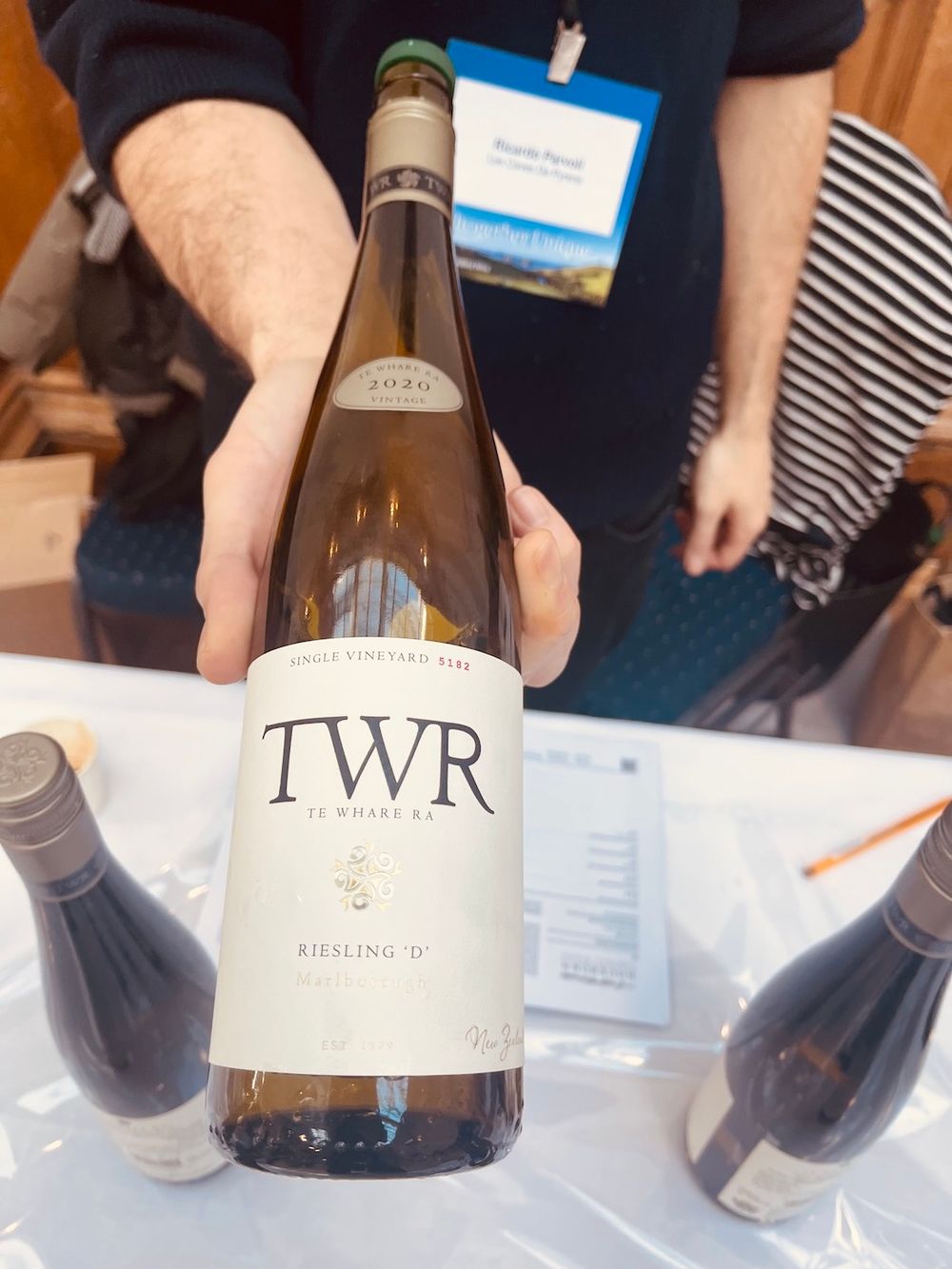
Te Whare Ra ‘D’ Single Vineyard Marlborough Riesling 2020
Organic, biodynamic and one of the first to be planted in 1979 (the oldest in Marlborough), TWR is fresh, fruity and eminently drinkable. The allure of floral fecundity, pink grapefruit, white peach, lime, apple and a mineral rich, super sapid mouth-watering acidity was too much and I simply had to swallow. £17.65
Felton Road Calvert Point Pinot Noir 2017
Less muscular than the Cornish Point but I loved the thought-provoking nature of this wine. I could guzzle gallons of spicy sensual Cornish Point but this made me pause and think and brought its own mature, tastefully spiced sensuality. Decanted two hours prior to tasting, its deep velvety incense-hued bramble and plum fruit paired magnificently with dense yet refined tannins. The nose is beguilingly floral and pretty, high church incense brings a touch of complicated class. Fascinating and endless. £65




